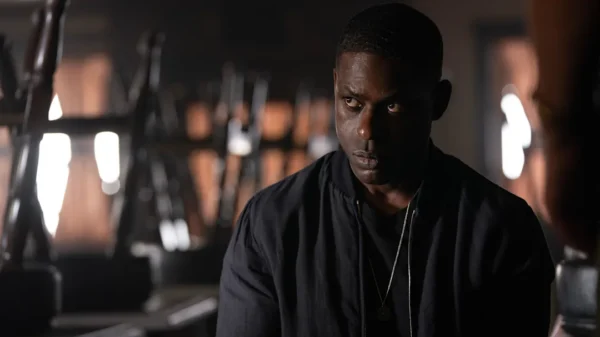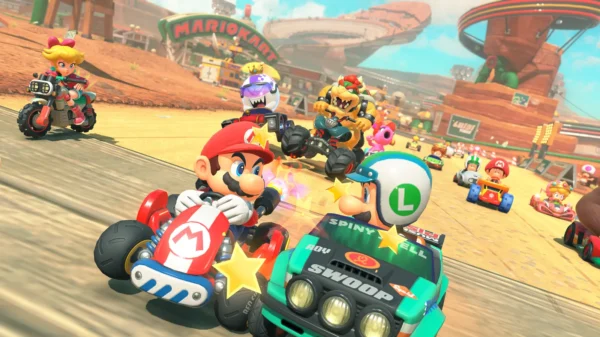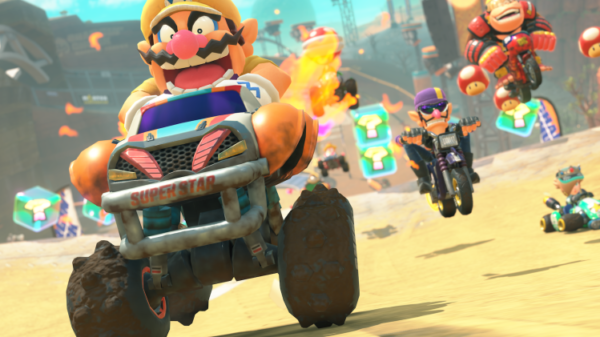Having a table full of capable, knowledgeable tabletop veterans can be both a blessing and a curse.
On one hand, they usually have a good understanding of how the game works. This means less flipping through core books, less checking yahoo answers, and fewer rules lawyering and arguments, which lets the dice fade into the background and the player’s characters moving to the forefront. Experienced tables usually have an easier time roleplaying, both because the players have done it before and because having a more natural understanding of the dice and bonuses required for an action lets the game become less about those dice and more about the actions themselves.
But when your players start guessing half of your end-of-campaign plot twists before they even happen, you know you’ve got a problem on your hands.
Usually, players are able to do this guesswork because they understand the creative process involved with building a campaign and/or running one. They understand that the NPCs that have fancy names and instruct backstories are probably going to be important later, while the random town guard named Jeff might not. They understand that there might be a lot to do in the first tavern they walk into because it was preceded by an in-depth description of the tavern’s air, mood, and occupants, versus the flower shop down the street, which was preceded by you frantically shuffling through your notes while stuttering through a less-than-spectacular visualization But now that we know how they think, it’s time to out-think how they think. See, players expect a tabletop game to be built in much the same way that a video game is built: The most detailed areas are the ones with the most interactivity. This is because games are expensive to make, and putting tremendous amounts of work into an area that won’t be crucial to the game would be a very unwise move. The money would be wasted, investors would be unhappy, and developers would be out of a job. But GMs don’t have investors banking on them to commit to the most efficient design method, which allows them to do some very unorthodox things. Some very shocking things.
The method described in this article uses a method that is not time-efficient to create an experience designed to make experienced players question their expectations. If you’re a GM who already finds themselves pressed for time to come up with content in time for sessions, this might not be for you. But if you find yourself with a bit of extra time, read on.
This tactic requires the PCs to be on some kind of quest that involves them traveling from place to place, and going somewhere they’ve never been before. During this travel, they will find a town along the path (Or road, or highway, or maybe they stop at a planet to refuel – whatever setting the game you’re running takes place in).
Create a really, really fleshed-out town. This is where the work comes in: This town has to be good. As in, “minimum-six-fully-fleshed-out buildings” good. Each shop or structure with a suitable bit of intro upon entering and some kooky NPCs to boot. To make the town seem even better without doing too much work, make the NPCs in different shops have believable connections with one another. Maybe the barkeep used to be married to the town priest before she was possessed by some kind of creature and made to do something terrible. Maybe the town priest didn’t believe the possession, and maybe the barkeep asks the party if they can find this demonic creature and prove its abilities to the priest. This is a quest that does NOT need to be written out, as the PC’s will, 100%, never get the chance to do it (explained later), but having hints at possible side-adventures inside this town might help convince PCs that this an area worth coming back to.
The point here is for PCs to recognize that this is an area with a lot of content to it. The point is to make some NPCs that they will like, and have some hints at adventures that they’re interested in returning to in the future. But, alas, they won’t be able to stay there for long, as this is just a single stop on the way to their destination. But they surely want to drop in on the way back and spend more time here.
Too bad they can’t. After they leave the town to complete their main objective, they return to find the town has been devastated. At least two-thirds of the shops are gone, and at least half of the NPCs that the party interacted with are no more. Especially that priest and that barkeep, and any other NPCs they thought were trying to give them quests.
Why does this work? Because it sucks. It sucks for you and it sucks for the players. DMs are inherently poised against actions like these because it’s disheartening to see hard work go to waste. And if the GM feels legitimate loss and sadness for actions that occur in the story, you can bet that players will feel that too.
What point you want this event to play narrative-wise is up to you. Maybe the town was destroyed by a giant red dragon, or some other grand enemy that the PCs will face during their next grand adventure. Maybe a villain was able to arm a weapon that unleashed this destruction upon the town, and the PCs arrived too late to stop the villain because they visited the town. Or maybe the village’s water supply became irradiated and they all died of radiation poisoning, further proving just how dangerous this world is. It’s your choice.
This plan might sound a little crazy, even for experienced GMs. For example, what if the PCs only visited two out of the six shops? Why should a GM be forced to throw away written content that wasn’t even used? The answer is that they shouldn’t, and they’re not being asked to do that here, either. There’s no reason an unused shop or NPC can’t be lifted off the ruins of this town and moved into another town in the future. If the PCs never knew it existed, then they also don’t know it existed in that town, and they don’t have reason to believe it couldn’t exist in another one. The main reason this plan requires the creation of so many locations is to give the players the feeling of an abundance of content, even if they only see half of it.
And from appearing to ‘lose’ so much content, your players will leave with their expectations subverted, and will be forever doubtful of their future assumptions about your next move.
Featured Image via an anonymous DM







































